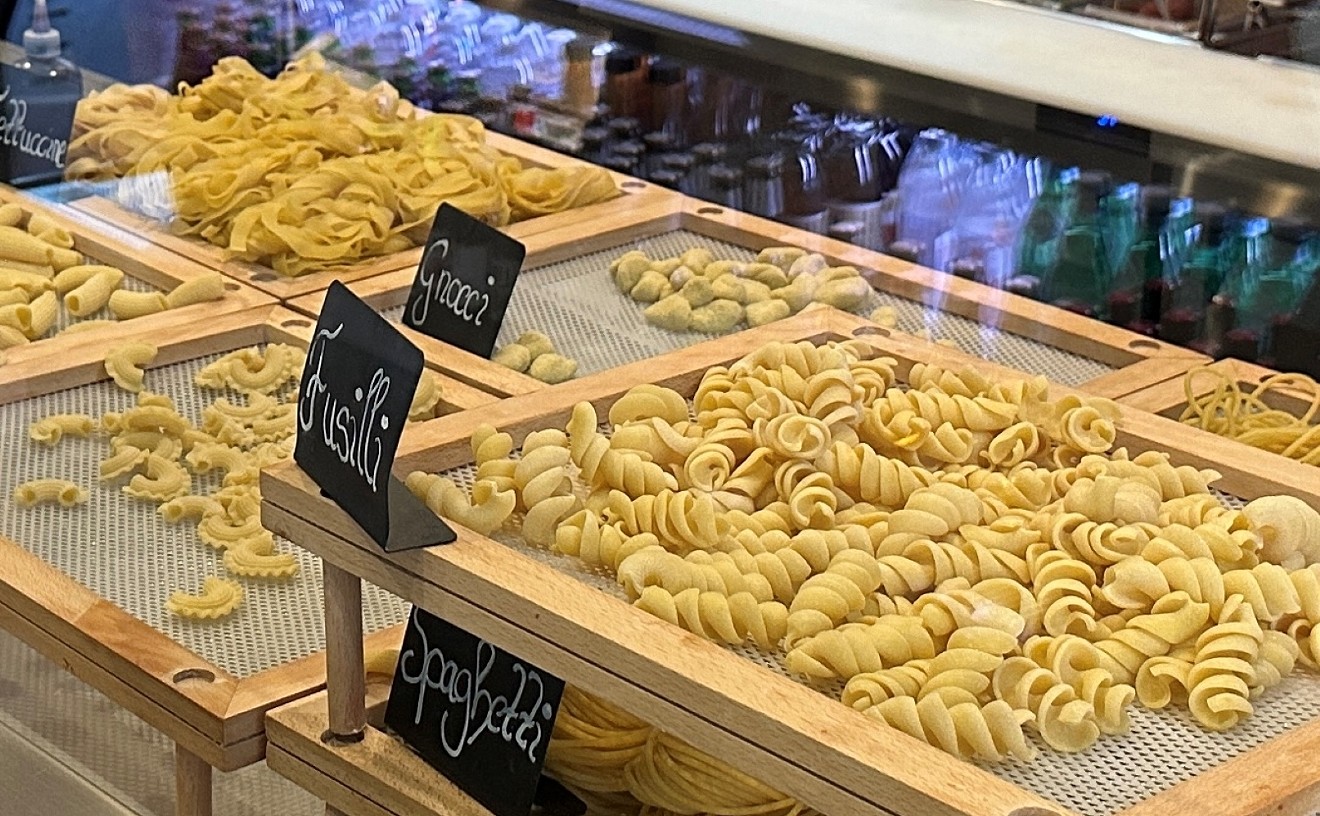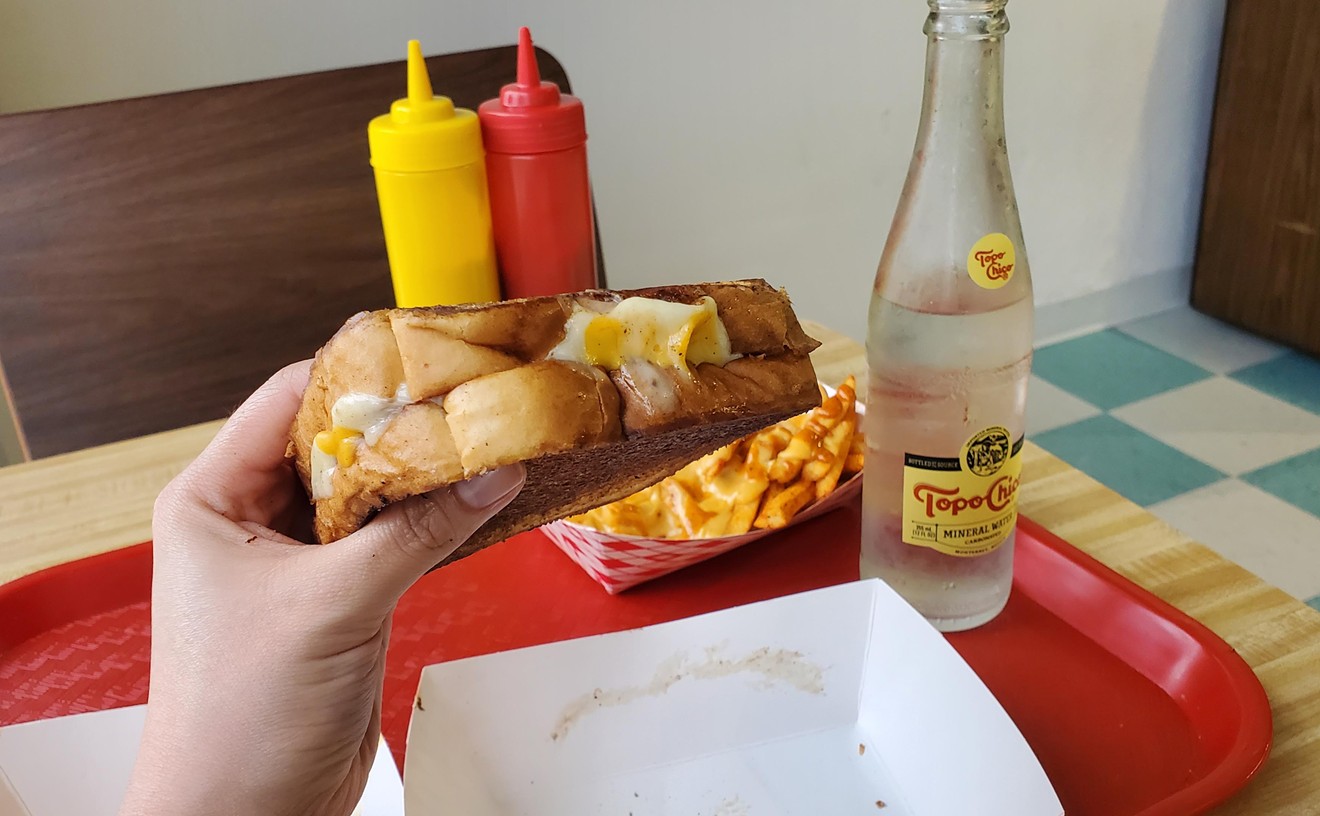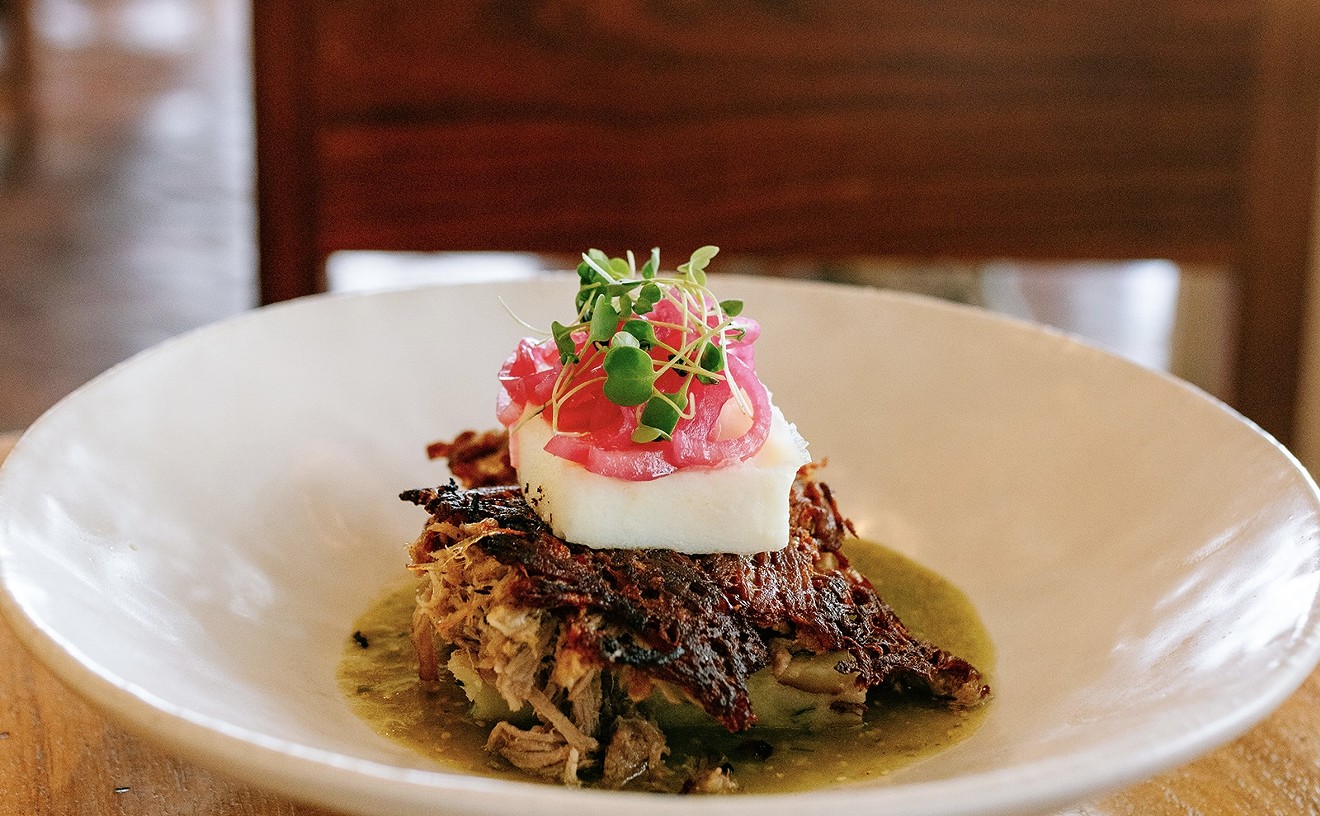However, we'll skip, for a moment, the burning question of Clinton's role in this condiment controversy and ask one simple question: Why don't Dallas restaurants serve real wasabi?
The fresh version of the spicy green glob served with sushi at Japanese restaurants simply costs more, according to restaurateurs. The pleasantly hot and spicy root similar to horseradish (except in color), grows naturally in a narrow geographic area ranging from Sakhalin Island south to Kyushu, Japan's southernmost major island. The Japanese use the grated root with raw fish and other dishes (including ice cream and wine, probably with frightening results). But the natural and commercially grown supply cannot keep up with its current popularity among American consumers: The green condiment even stars in a light-beer commercial.
"Fresh wasabi is very expensive," confirms Masao Yamamoto, owner of Chaya Sushi & Grill on Royal Lane, "up to three times more expensive than the other forms." Close to 50 Japanese restaurants battle for diners just in the Dallas half of the metroplex. Most of these establishments serve either a powdered version of wasabi, which they mix with water or vinegar, or a prepackaged wasabi paste. Both sound as appetizing as haggis.
Dry wasabi powder dominates the market. (A 2-ounce can costs $6 from an Internet retailer.) But critics claim the stuff bears little resemblance to fresh wasabi. According to Pacific Farms, a commercial wasabi farm in Florence, Oregon, the powdered form typically includes a mixture of horseradish powder, mustard powder, and Kermit-green artificial coloring. Even local restaurateurs seem disappointed in the mixture. "I'm not sure about the ingredients," Yamamoto admits. "The powder is spicy, hot, but does not have good flavor." The powdered stuff "is too spicy," says Ayako Thompson, manager of Teppo on Greenville. "Fresh wasabi has more flavor and tastes better with raw fish." "The powder is hotter" confirms a staff member at Ajiya Sushi & Grill in Irving.
Fresh wasabi generates a more subtle and temporary flavor than the sinus-searing, nose-running blast of horseradish. The paste version--around $2 for a 1.5-ounce tube--comes closest to the real thing. It contains either 100 percent wasabi or a blend of wasabi and horseradish, depending upon how much you wish to spend. Of course, Dallas-area restaurateurs agree that fresh wasabi complements raw fish.
Yet Teppo serves both fresh and powdered wasabi. Chaya offers the paste version (with sashimi) and the dry stuff. Ajiya dollops out the powder. Simply put, Dallas restaurants don't serve "real" wasabi because of cost and convenience.
Still, they all call it wasabi, whether fresh, powdered, or packed in a plastic tube.










